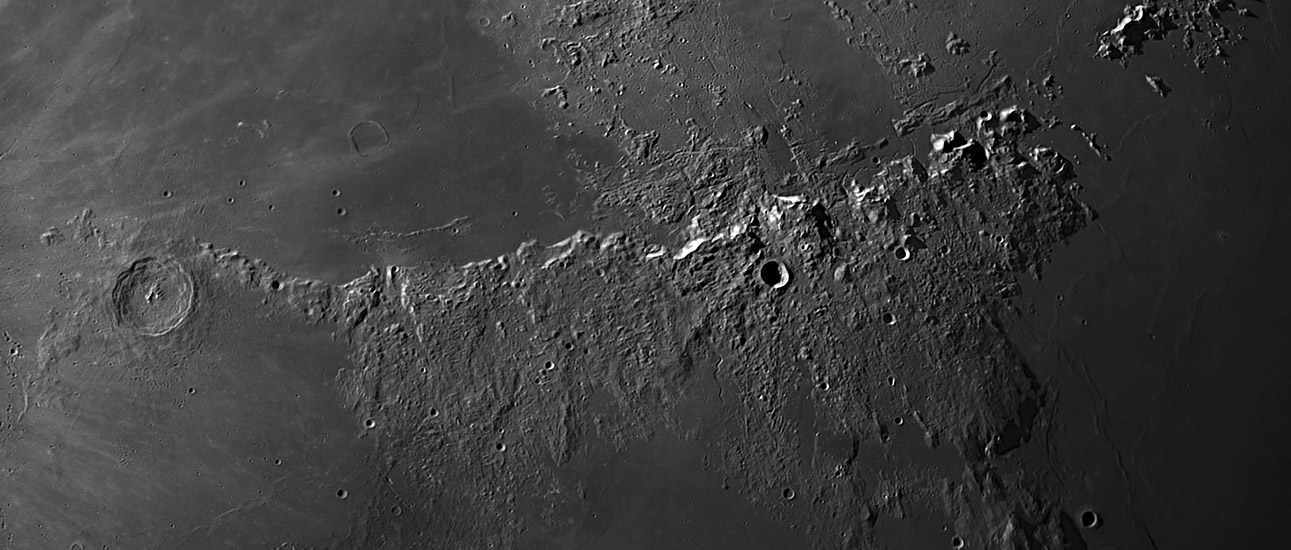August 3, 2013
Slicing the Apennines

image by Daniel Chang, Hong Kong Sai Kung
What has happened to the Apennine Mountains? They appear to have been sliced into a series of long, generally parallel slabs. You can
easily see linears cutting through the mountains, and the front of the Apennines - where they face Mare Imbrium - is jagged with offsets.
It appears that strike-slip faults - where one side of a fault moves to the right or left of the other - was common. Most other lunar faults
have more of an up-down movement, for example, the Straight Wall and Cauchy faults, and indeed the Apennines themselves, that moved
up relative to the mare side. No other basin rim is faulted in this way. The Cordillera rim of the Orientale Basin is irregular with scallops and
perturbations to its ideal circularity, but it is not broadly cut by a series of parallel faults as the Apennines are. Nor is the Altai scarp. Something unique happened to the Apennines. The Apennines are nearly opposite to the direction that the Imbrium-forming projectile came from,
according to Pete Schultz' proposal that the basin formed by an oblique impact. Since the Apennine side would be where the horizontal forces
would be greatest is it possible that the foreward momentum of the impact ruptured the crust into the slabs we see today?
Chuck Wood
Technical Details
2013-07-28 20:18UT. Takahashi Mewlon 180mm f/12; focal length f/2,160 mm + x3 = 6,480mm + ASI 130MM 1280 x 1040 camera, 1/30s Total : 4 AVI stacked: 500 frames x 1 = Mosaics 4 frames x 1. Stacked & processed with PTGui RegiStax 6 & PS.
Related Links
21st Century Atlas charts 11 & 18.
Yesterday's LPOD: Plato in My Dreams
Tomorrow's LPOD: Cleo 3
COMMENTS?
Register, Log in, and join in the comments.



